One of my most favorite food parables is the allegory of the long spoons. The story, generally attributed to Rabbi Haim of Romshisok, tells of two banquets, both of which have only long handled spoons as the available cutlery. At one banquet, the diners try to feed themselves, but the food gets nowhere near their mouths because the spoons are so long that it is impossible to eat a bite. At the second banquet, the diners realize that instead of attempting to take bites on their own, if they use their spoons to feed each other, they can all partake in the delicious feast. This is meant to be an allegory for heaven and hell. To be fair, the idea of hell being a feast you can’t actually eat seems pretty on the nose.
I first came across this tale in 2019 when I was in London for work, and the Victoria & Albert Museum was holding an exhibit called Food: Bigger Than the Plate. I had a bit of time to spare in my day, and I love the V & A, so went to go check it out. The whole exhibit was great, but towards the end, there was a long white table, empty except for two long spoons in the middle and a placard telling the story. While, like many parables, there seems to be a pretty easy solution to this problem of the long spoons that doesn’t involve feeding each other — has no one tried choking up on the spoon or (the horror!) eating with their hands?! — I really loved the image of these elegantly long spoons, and the idea of people having to truly share a meal because of the need to rely on each other to eat. I’m not sure if ultimately, needing someone else to be able to eat sounds like heaven to me, but I will agree that eating with others adds its own extra seasoning to an already delicious meal.

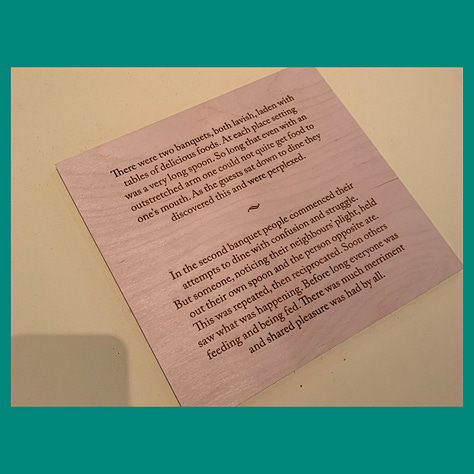
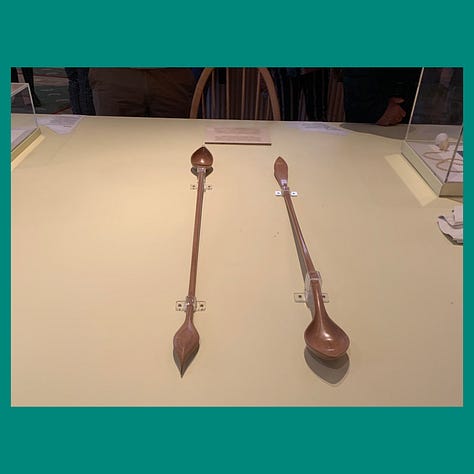
A couple weekends ago I headed to NYC for the annual Cherry Bombe Jubilee, a conference that brings women and allies who work in or adjacent to the food and hospitality industries together for a day of networking, eating, panels and just general, well, jubilee. I’ve gone the last two years after I was on a panel (and the cover of the Cherry Bombe magazine!) three years ago. I love that it brings together people who are hungry (pun intended) to make connections and help each other in an industry that has always been defined by how cutthroat it can be. It also can feel like summer camp: you meet up with friends that you don’t live close to and get to see only when you’re there.
Last year, I made no plans outside of the Jubilee events (to be fair, I was in NYC for about 36 hours because I still had a breastfeeding baby at home), and stumbled into some great conversations and meals. I even met my now literary agent in an elevator! This year, I wanted to make sure I got to see people I hadn’t seen in a year or longer, and I made too many plans. While anxiously navigating hanging out post-conference with some friends, and with my aforementioned agent and a couple of her clients, I discovered that we actually were the same party heading to the same restaurant for the same reservation. What luck!
We went to Txikito, a Basque restaurant that I had never heard of, and will now be recommending to everyone that goes to NYC. We ordered most of the menu, and basked (another pun intended) in the absolute deliciousness of each dish. Highlights for me included the whole fried shrimp, crispy and just briny enough, dunked in a garlicky aioli, both carpaccios, one a gorgeous circle of thinly sliced chilled octopus drizzled with beautiful citrusy olive oil and piment d’espelette, the other warm slivers of king oyster mushrooms topped with a bruschetta-like tomato salsa and a nutty Basque cheese called Idiazábal. My personal favorite was the perfectly cooked steak with roasted peppers, bone marrow and anchovies, in which each bite was melt-in-your-mouth umami cut through with just enough salt and acid to make a perfect balance of flavor.

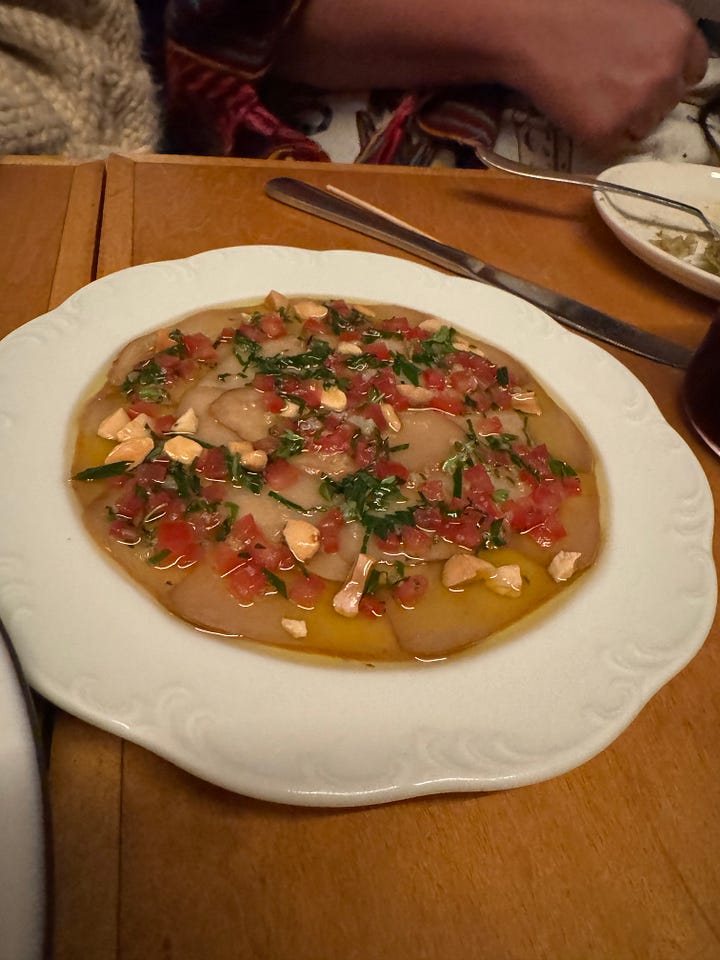
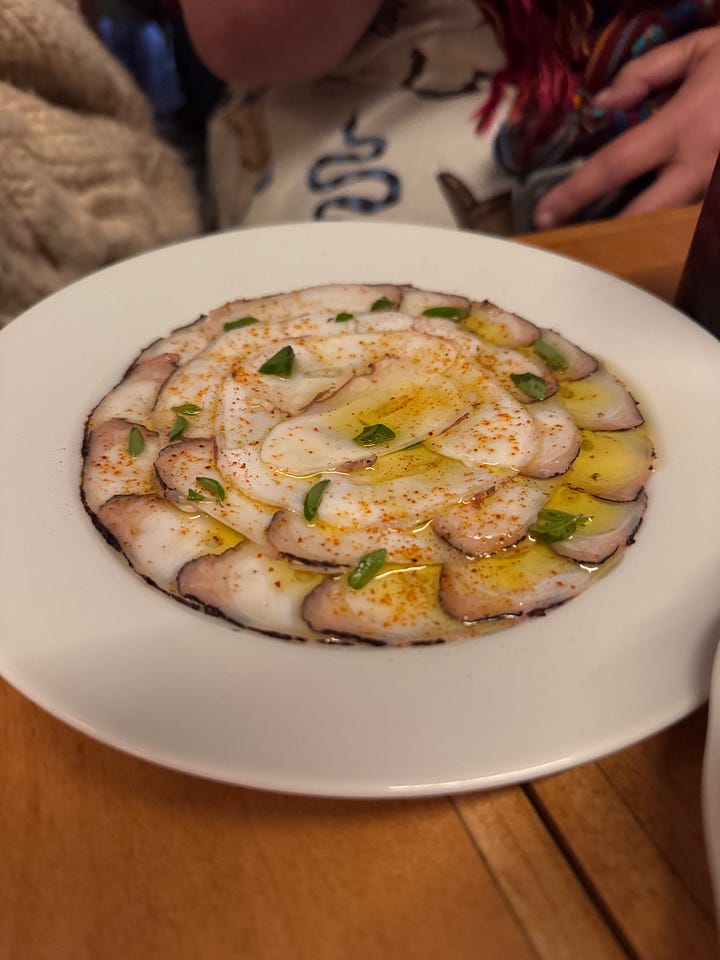
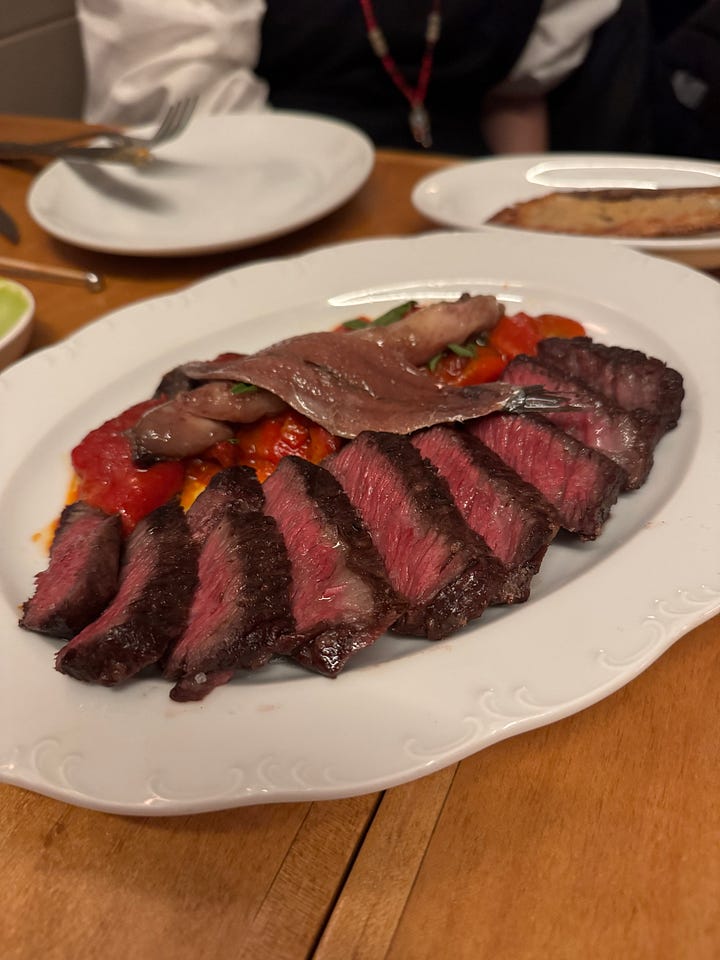
If I were to rewrite the parable of the long spoons for my own dining life, hell would be going to a restaurant and being presented with a menu as delicious looking and anchovy-studded as the one from Txikito and being told I could only order one thing and couldn’t share with anyone else at the table. Heaven would be what this dinner was: ordering everything that sounded good, passing plates around the table, and enjoying each others company, talking about life, work and food, of course. And going back to the original parable, being at a conference like Jubilee is a reminder of the power of connection and the magic that comes from helping each other. One of the most heard phrases at Jubilee is “I need to introduce you to…” It feels like we are each walking around with a long spoon, feeding each other delectable morsels of career help, contacts, advice and friendship.
This month’s recipe is a nod to the Basque meal we had at Txikito. Anchovies feature prominently in Basque cuisine, and pintxos, the Basque version of tapas, which are often skewered, since pincho (the Spanish spelling) means “spike”. Many of them are smaller, more snack-like than Spanish tapas, but there is a lot of overlap between the two categories. My personal favorite is the gilda, a small skewer traditionally comprised of a Cantábrico anchovy, a Guindilla pickled pepper, and a pitted Manzanilla olive. They are salty, piquant and pair excellently with a cold alcoholic beverage, which is why I love them with a dirty vodka martini (not such a traditional choice). And since, in my opinion, everything is made better with cheese, I like adding a bit of Spanish cheese, like Manchego, or a Basque cheese like the Idiazábal found on the mushroom carpaccio from Txikito.
Keep reading with a 7-day free trial
Subscribe to The Cornivore to keep reading this post and get 7 days of free access to the full post archives.



